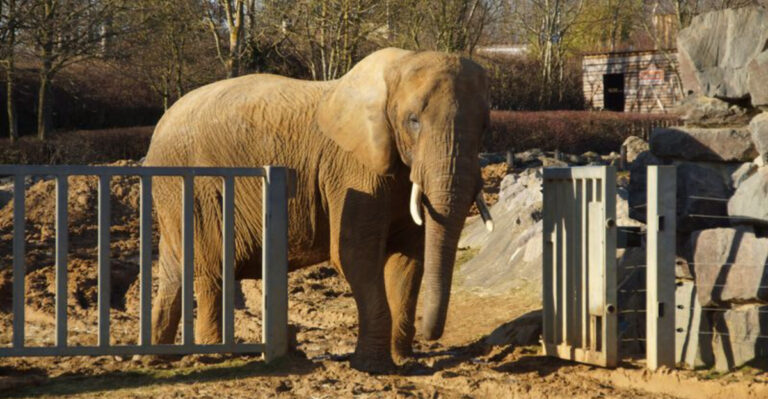14 Fascinating Ways Chimps Display Human-Like Intelligence
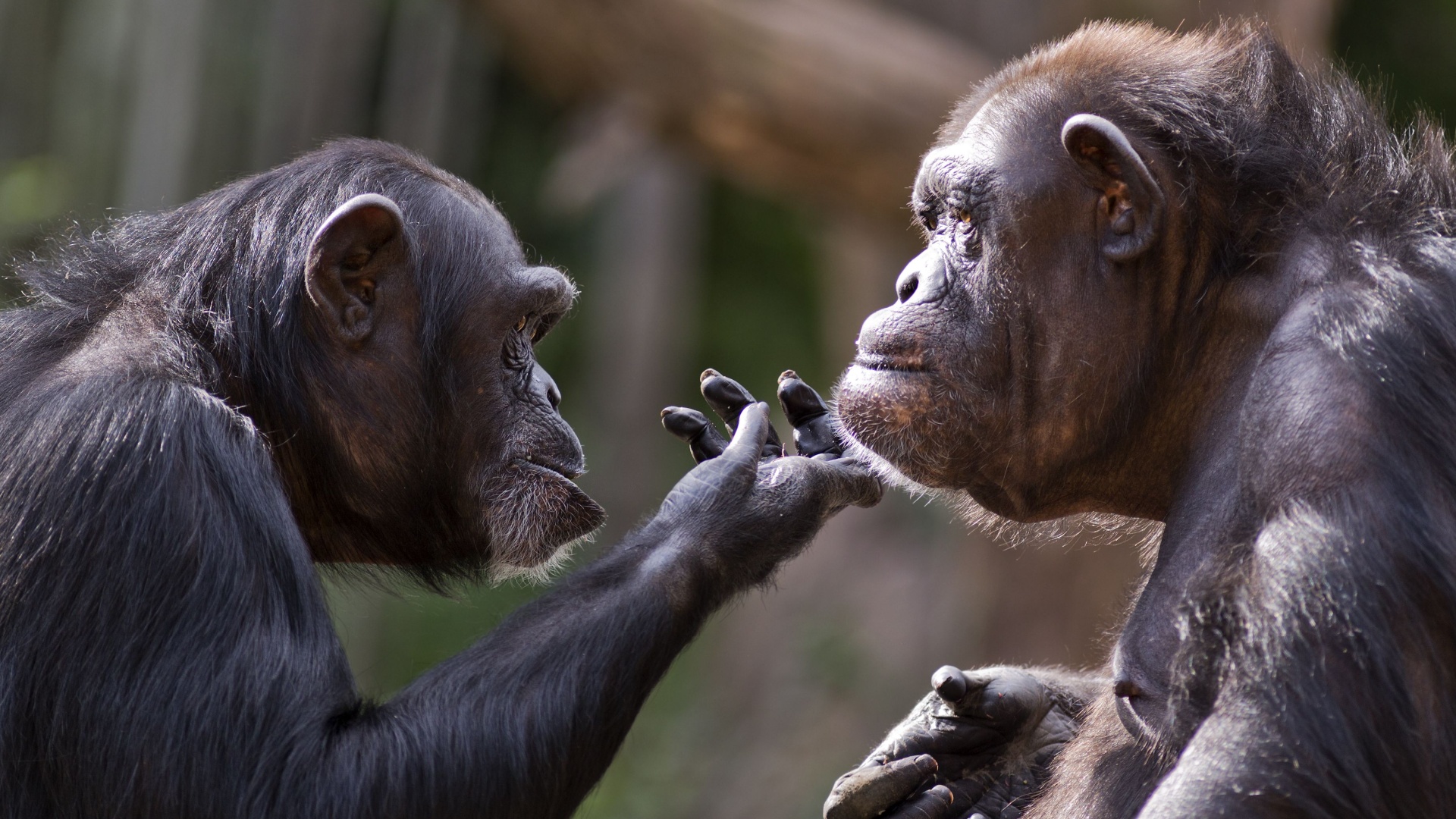
Chimps, our closest living relatives in the animal kingdom, have continually astounded researchers and animal enthusiasts alike with their remarkable intelligence. While it’s clear they share more than just DNA with humans, the full extent of their cognitive capabilities is a source of endless fascination.
From solving puzzles to understanding complex social hierarchies, chimps demonstrate behaviors that mirror human intelligence in a multitude of ways.
Let’s explore the captivating world of chimpanzee intellect through these exceptional displays of their human-like intelligence. Prepare to be amazed, amused, and perhaps even a little envious of these clever creatures!
1. Tool Use

These clever primates have been observed using sticks to fish for termites and even crafting spears to hunt small animals. Such behaviors illustrate not just problem-solving skills but also foresight and the ability to learn from each other. In the wild, a chimp might break a branch from a tree, strip it of its leaves, and then wield it as a tool to accomplish a task.
Imagine the scene: a chimp carefully selects a stick, tests its flexibility, and with a few adept tweaks, transforms it into the perfect tool for extracting delicious bugs from a mound. This isn’t just instinctual behavior; it’s a demonstration of cognitive planning and adaptation. In their forest homes, these tool-wielding chimps provide a glimpse into the evolutionary roots of human innovation.
This ability to manipulate objects to solve problems is a striking reminder of the shared ancestry between humans and chimps, highlighting a profound connection that goes beyond mere genetics.
2. Social Structures
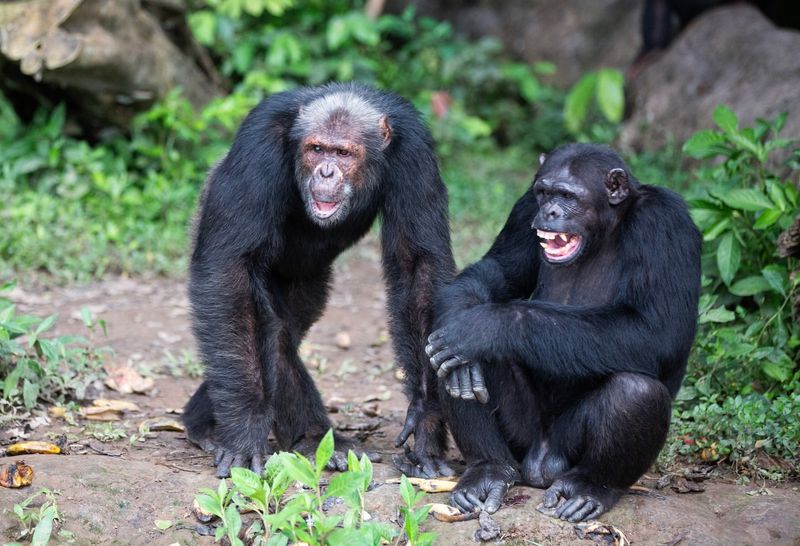
In the wild, chimpanzees exhibit complex social structures that rival even some human societies. Their communities are built around intricate hierarchies, with each member playing a strategic role. This isn’t just mindless animal behavior; it’s a showcase of political savvy that would make even seasoned diplomats pause in admiration.
Chimpanzees communicate through vocalizations, facial expressions, and body language, all contributing to a well-oiled machine of social interaction. They form alliances, engage in grooming to strengthen bonds, and even resolve conflicts through reconciliation. Observe a day in the life of a chimpanzee group, and you’ll find a bustling network of relationships, each one carefully maintained. It’s like a real-life game of chess where every move counts.
These interactions are not just about survival but about maintaining harmony and cohesion within the community. Such intelligent social maneuvering underscores the cognitive depth and emotional intelligence that chimps possess, drawing yet another parallel to human social behavior.
3. Memory Skills

Memory in chimpanzees is an area where they’ve shown incredible prowess, sometimes even surpassing humans. In controlled experiments, chimps have demonstrated the ability to memorize sequences of numbers and recall them with impressive accuracy. This isn’t just a party trick; it reveals a deep cognitive capability for processing and storing information.
Picture a chimp tapping away on a digital screen, recalling numbers in a sequence faster than your average Joe could manage. Their memory skills aren’t just limited to numbers; they remember faces, routes, and even complex social interactions.
This ability to retain and recall information plays a crucial role in their survival and social navigation. In the wild, a chimp’s memory might be the key to remembering the location of food sources or the faces of friends and rivals alike.
Such robust memory abilities highlight the sophisticated mental workings of chimps, which, in many ways, echo the capacities of the human mind.
4. Problem Solving
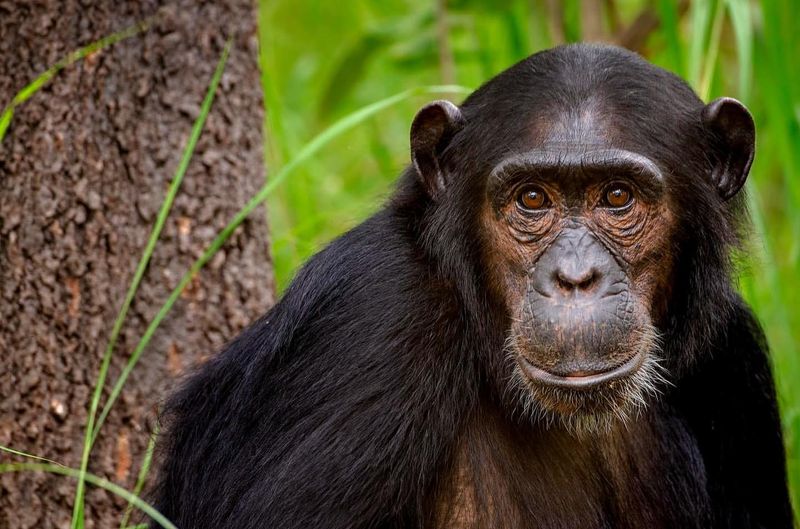
Chimpanzees are adept problem solvers, a trait that showcases their intelligence and adaptability. When faced with challenges, chimps employ creative solutions, demonstrating an understanding that seems to transcend instinct. Whether it’s navigating obstacles to reach a treat or using water to extract a peanut from a narrow tube, their ingenuity is remarkable.
Envision a chimp pondering over a puzzle, its brow furrowed in concentration. With a spark of insight, it devises a strategy, executes it, and voilà – success! This isn’t just trial and error; it’s thoughtful problem-solving that reveals cognitive complexity. These problem-solving skills are not just for show. In the wild, they translate into survival techniques, from finding food to navigating social alliances.
Chimps’ ability to think outside the box and adapt to new situations is a testament to their intelligence, mirroring the innovative spirit that drives human progress.
5. Communication
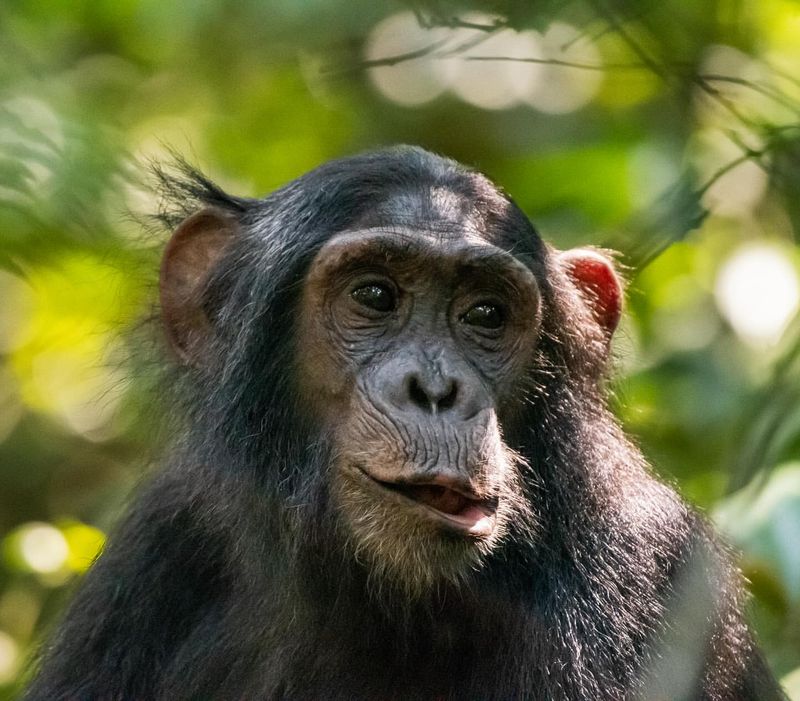
Communication among chimpanzees is a sophisticated affair, rivaling the complexities of human language in its own unique way. They employ a range of vocalizations, gestures, and facial expressions to convey messages, express emotions, and coordinate activities. Imagine two chimps in a forest, engaging in a lively exchange of grunts, hoots, and hand signs. T
his isn’t just noise; it’s a conversation, complete with nuance and context. They can signal warnings, express affection, and even negotiate social standings. Such intricate communication techniques enable chimps to navigate their social environments effectively, fostering cooperation and understanding within their communities.
This level of communication sophistication is a hallmark of intelligence, offering a window into the evolutionary roots of human language and social interaction.
6. Empathy And Altruism

Empathy and altruism are often considered uniquely human traits, yet chimpanzees demonstrate these qualities with surprising clarity. In their communities, chimps have been observed comforting distressed companions, sharing food, and even assisting injured group members.
These behaviors go beyond mere survival instincts, indicating an emotional depth and understanding that is deeply touching. Such acts of kindness and empathy are not just fleeting moments but integral aspects of chimp social life. They promote group cohesion, strengthen bonds, and enhance the overall well-being of the community.
This capacity for empathy and altruism underscores the emotional intelligence of chimps, drawing striking parallels to human compassion and social support mechanisms.
7. Self-Awareness
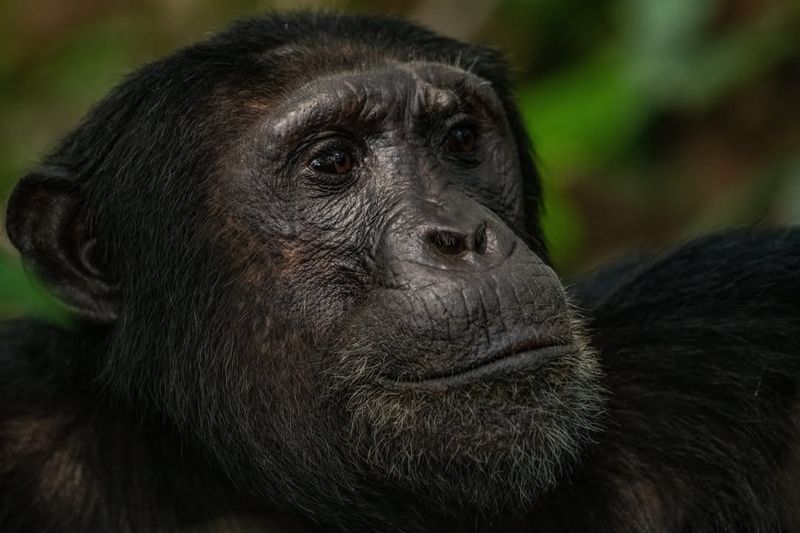
The concept of self-awareness is often seen as a defining feature of human consciousness, yet chimps have demonstrated this trait in various experiments. One of the most compelling pieces of evidence is their ability to recognize themselves in mirrors, a test known as the “mirror test.”
Visualize a chimp gazing into a mirror, its reflection staring back. With a curious touch, it explores its own face, realizing that the image is of itself and not another chimp. This recognition indicates a level of self-awareness that is remarkable among animals.
Self-awareness in chimps suggests an understanding of their own identity and place in the world, an insight that has profound implications for how we perceive animal consciousness. It highlights the cognitive and emotional parallels between chimps and humans, challenging us to reconsider the boundaries of intelligence in the animal kingdom.
8. Planning For The Future
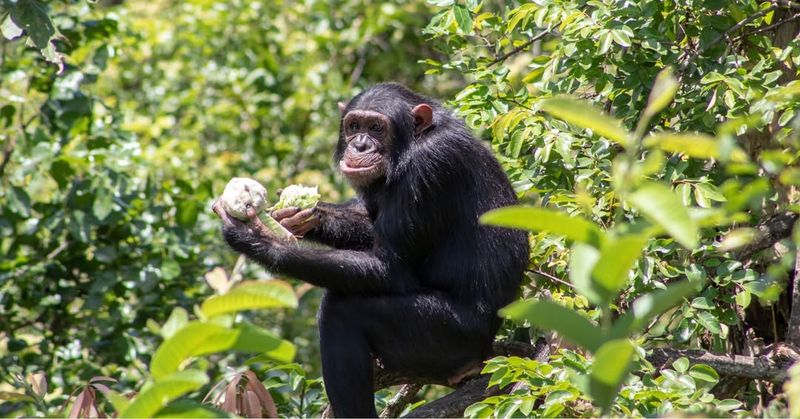
Chimps have shown an ability to anticipate future needs, such as storing food for later consumption or preparing tools ahead of time. Consider a chimp collecting fruits and stashing them away for tomorrow’s meal.
This isn’t just about immediate gratification but a calculated action to ensure future sustenance. It reflects an understanding of time and the ability to project into the future. Such planning abilities demonstrate a sophisticated level of intelligence, allowing chimps to navigate their environments with strategic foresight.
It reveals a depth of thought that aligns closely with human capabilities, emphasizing the remarkable cognitive connections shared between our species.
9. Learning By Observation

Observational learning plays a key role in both human and chimp development. These intelligent primates acquire essential survival skills by watching and replicating the actions of experienced members of their group.
Whether it’s mastering foraging techniques or using tools, their ability to learn through observation goes beyond simple imitation. This process ensures that knowledge and behaviors are passed down, strengthening social bonds and shaping group dynamics.
The ability to adapt and apply learned skills demonstrates their cognitive flexibility, drawing a fascinating comparison to how humans share and preserve knowledge across generations.
10. Tool Creation
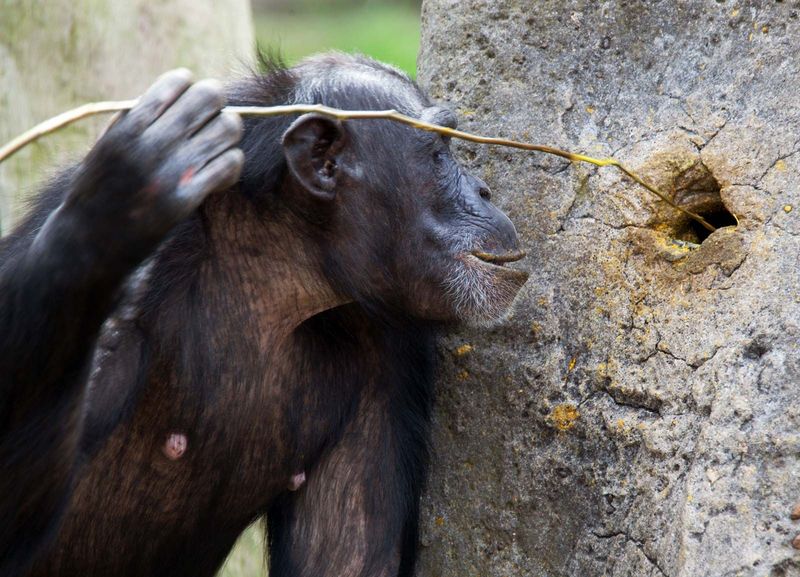
Tool creation is an extraordinary display of intelligence, and chimps have mastered this art with finesse. Beyond using what they find, they fashion tools from natural materials, showcasing creativity and problem-solving skills.
Imagine a chimp selecting a branch, stripping it of leaves, and crafting it into a tool perfectly suited for the task at hand. This isn’t just using what’s available; it’s creating something new, a hallmark of innovation and ingenuity. In their natural habitats, these tool-making abilities allow chimps to exploit resources and solve problems efficiently.
It highlights a level of intelligence that resonates with human invention, bridging the gap between instinctual behavior and thoughtful creation.
11. Mimicking Human Behavior

Chimps are basically the ultimate copycats – in the best way possible! They don’t just mimic for the fun of it; they actually watch, learn, and put their own spin on things.
Whether it’s picking up gestures, expressions, or even figuring out how to use objects in clever ways, they’re always paying attention. It’s not just mindless copying – it’s smart, adaptable learning that shows just how sharp they really are.
Their ability to pick up new behaviors makes them even more fascinating, proving that they’re a lot more like us than we might think!
12. Understanding Fairness
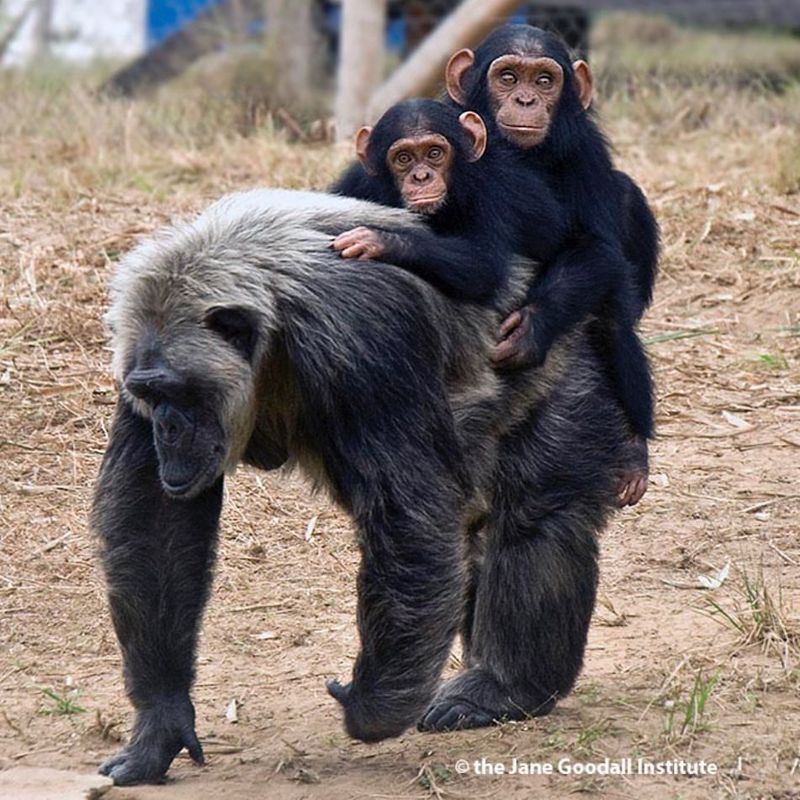
Understanding fairness is a concept that many might assume is uniquely human, yet chimps have demonstrated an awareness of equitable treatment. In controlled experiments, chimps have been observed reacting negatively when they perceive an unfair distribution of rewards.
Picture two chimps participating in a task, only to see one receive a better reward. The slighted chimp might protest, refuse to participate, or even throw a tantrum. This isn’t just a reaction to missing out; it’s an understanding of fairness and justice.
Such behavior underscores the social intelligence of chimps, revealing a nuanced grasp of equity and cooperation. It draws a fascinating parallel to human concepts of fairness, challenging the notion that such ideas are exclusive to our species.
13. Expression Of Emotions
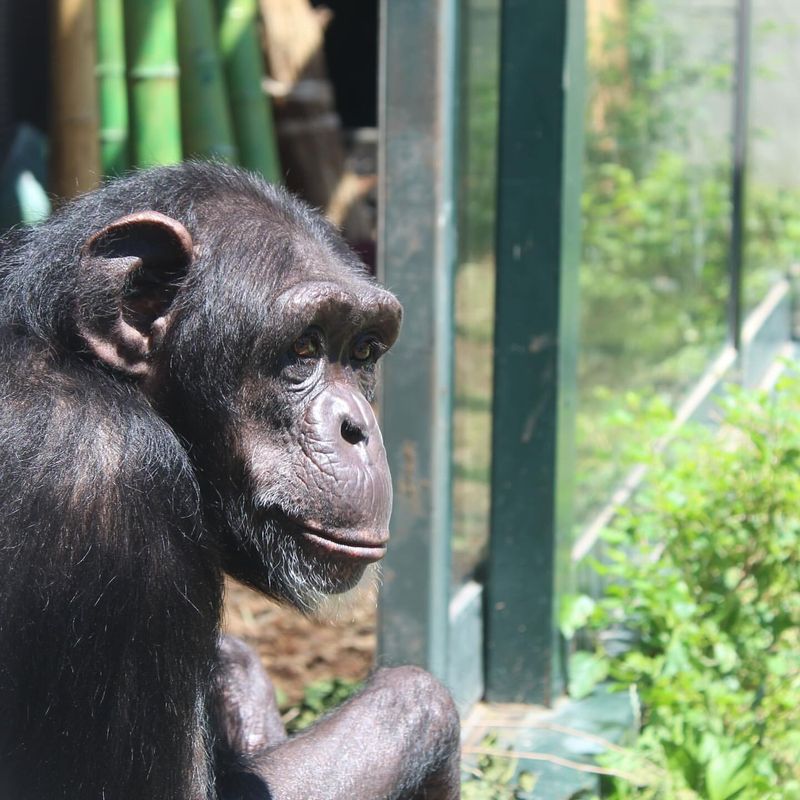
The expression of emotions in chimps is a vivid reminder of the emotional depth shared with humans. Through facial expressions, vocalizations, and body language, chimps convey a wide array of emotions, from joy and excitement to frustration and grief.
These emotional displays are not just basic animal instincts but complex expressions that resonate with human experiences. Chimps’ ability to express and interpret emotions plays a crucial role in their social interactions and bonding.
It highlights the emotional intelligence that aligns closely with human emotional experiences, offering a glimpse into the shared emotional landscape between our species.
14. Cultural Behaviors
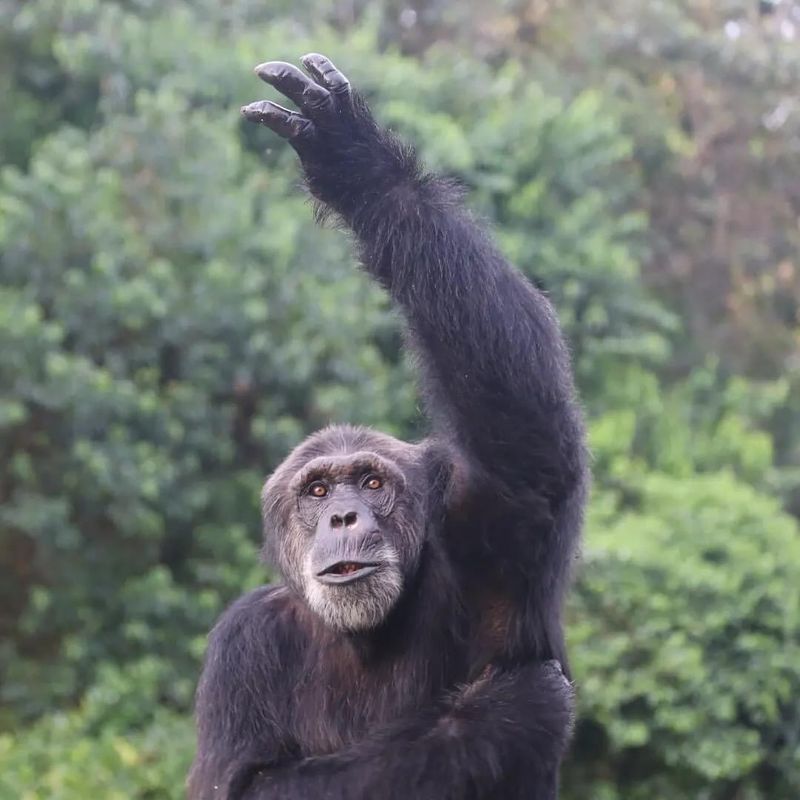
Cultural behaviors in chimpanzees provide a fascinating insight into their social and cognitive worlds. Within different groups, unique practices emerge, such as the use of specific tools or gestures, that are passed down through generations.
Picture a group of chimps using a particular method to crack nuts, a technique unknown to other communities. This isn’t just learned behavior; it’s a cultural tradition, rich with meaning and significance.
These cultural practices reveal the sophisticated social dynamics and cognitive abilities of chimps, drawing intriguing parallels to human cultures. They emphasize the complexity and adaptability of chimp societies, shedding light on the shared evolutionary pathways of cultural development.



